
A well-planned hedging scheme not only enhances the beauty of a space but also plays a crucial role in supporting local wildlife. A mixture of flowering, berry-producing, and sometimes prickly species can create a safe and thriving habitat, providing food, shelter, and nesting opportunities for birds, insects, and small mammals.

Hawthorn is one of the most valuable native species for wildlife. Its clusters of fragrant white flowers attract pollinators in spring, while the glossy red berries, known as haws, provide an essential food source for birds in autumn and winter. The dense, thorny structure also makes it an excellent nesting site and protective barrier.
A semi-evergreen ornamental shrub, wild privet produces delicate white flowers that attract pollinators such as bees and butterflies. Its small black berries are a favourite among birds, providing an essential food source through the colder months.

Guelder rose is a striking deciduous shrub that features pretty white flowers in summer, followed by glossy red berries in autumn. The berries are a key food source for birds, while the vibrant foliage provides seasonal interest. Its dense growth makes it an attractive option for mixed hedging.
A native wild rose, dog rose produces beautiful pink flowers that are highly attractive to pollinating insects. In autumn, its bright red rose hips provide an essential source of food for birds such as thrushes and blackbirds. Its thorny stems also offer protection and shelter for nesting birds.

Blackthorn is a hardy native hedging plant that supports a wealth of wildlife. It produces delicate white flowers in early spring, providing one of the first nectar sources for bees. Its autumnal dark blue sloes are a valuable food source for birds and small mammals, while the dense, thorny growth offers excellent cover.
Alder buckthorn is a fantastic wildlife hedge plant that is particularly beneficial for pollinators. It produces small yellow-green flowers that attract bees and butterflies, followed by dark berries that birds love. It also serves as an essential food plant for the caterpillars of the brimstone butterfly.
Posted 30th Jan 10:05am
Read more >
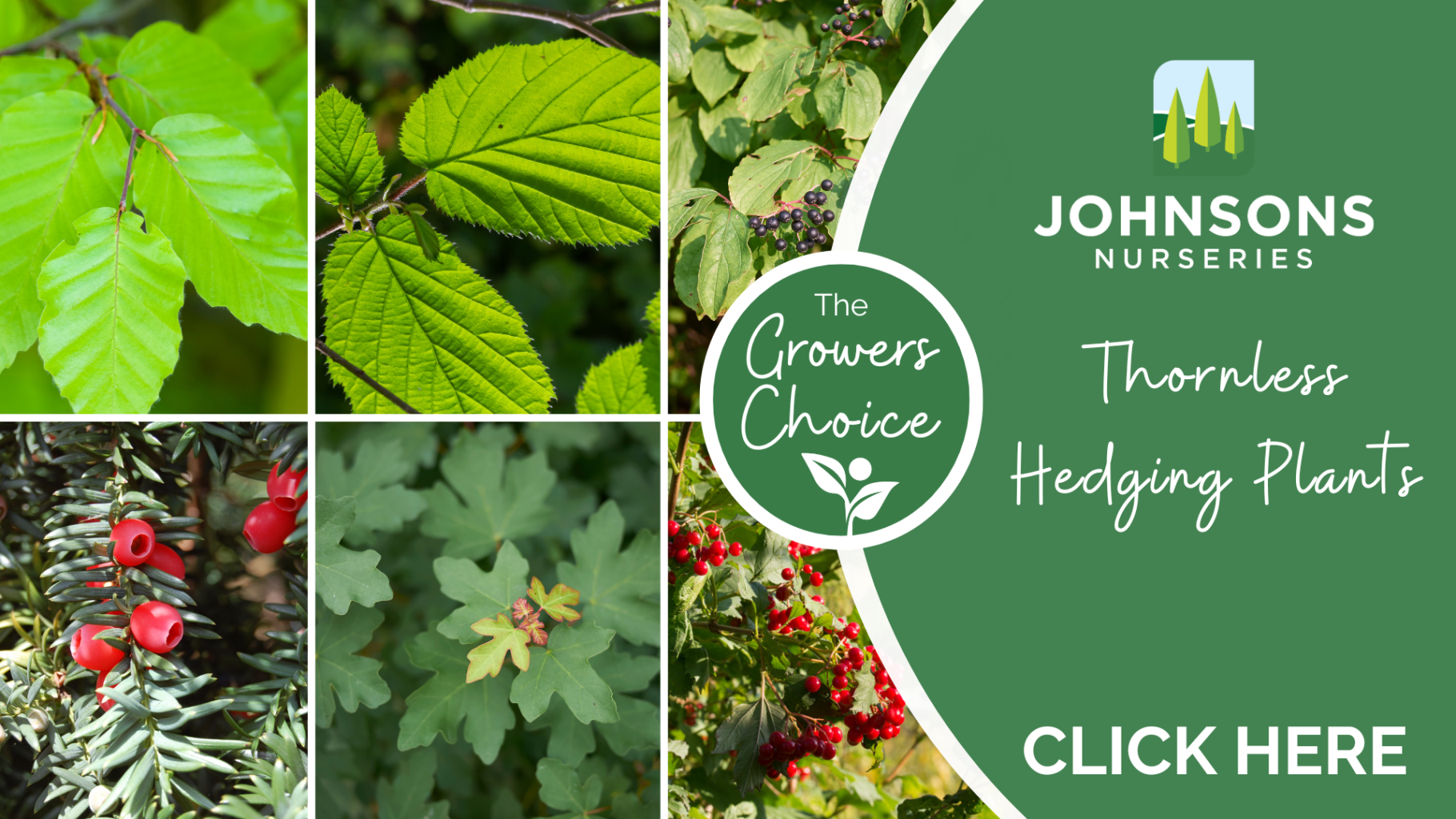
When planning a hedging project for public footpaths, gardens, or community spaces, safety is a key consideration—especially where children, pets, and wildlife are involved. Thornless hedging offers a fantastic alternative to spiky and potentially hazardous plants while still providing essential shelter, food, and year-round visual interest.
Native thornless hedging is particularly beneficial as it supports local biodiversity, attracts pollinators, and enhances the natural landscape. Here are some excellent choices that will bring colour, texture, and wildlife into your outdoor spaces without the risk of thorns.

Hornbeam is a resilient, native hedging tree with dense foliage that remains throughout the year, providing a reliable windbreak and privacy screen. In autumn, its leaves turn golden yellow, adding seasonal interest. It is an excellent choice for structured hedging that offers nesting sites and cover for birds while being completely thorn-free.

Hazel is a fantastic multi-purpose hedging plant, offering seasonal beauty and food for both humans and wildlife. It produces yellow catkins in early spring, which attract pollinators such as bees, and edible hazelnuts in autumn, providing an important food source for squirrels and birds. Hazel’s quick growth and ability to be coppiced make it an excellent option for creating a natural, bushy hedge.
A native broadleaf shrub, dogwood is valued for its striking red stems that bring vibrant colour to winter landscapes. In summer, it produces small white flowers that attract bees, followed by dark berries that birds love. Dogwood thrives in mixed hedging schemes, adding seasonal contrast and ecological benefits.

The native crab apple is a beautiful addition to a thornless hedgerow. In spring, it offers fragrant blossoms that attract bees and butterflies. In autumn, it produces small apples that provide an essential food source for birds and mammals, making it one of the best hedging plants for wildlife. It also enhances the visual appeal of a hedgerow with its attractive fruits and delicate flowers.

Spindle is a unique hedging plant known for its stunning pink flowers and vibrant orange berries in autumn. These fruits are a favourite among birds, and their nectar-rich flowers attract pollinators, ensuring year-round biodiversity. Spindle’s bright colours make it an eye-catching addition to hedging schemes while remaining completely safe for children and pets.

Beech is a popular deciduous hedging plant known for its vibrant green leaves that turn a beautiful copper in autumn. Even though it’s deciduous, beech often retains its dried leaves throughout winter, providing year-round screening. It is highly adaptable and grows well in a variety of soil types, making it a great choice for formal and informal hedging alike. Beech is also a valuable habitat for many insect species, supporting biodiversity within the hedge.

Yew is a classic evergreen hedging plant with dark green needles, providing dense coverage year-round. It’s highly valued for its longevity and ability to be shaped, making it ideal for formal hedges. Yew hedging is incredibly resilient, capable of tolerating heavy pruning and adapting to different environments. While its red berries add ornamental interest and provide food for birds, caution should be taken as its seeds are toxic if ingested by humans or pets.

Privet is a semi-evergreen shrub commonly used for hedging due to its rapid growth and dense foliage. It produces small white flowers in summer, followed by black berries that attract birds. This plant is an excellent choice for those looking to create a structured hedge with year-round interest. It is highly adaptable, thriving in urban environments, and is tolerant of pollution, making it ideal for roadside and urban hedging.
Whether you’re designing a hedge for a school, public park, or garden, incorporating these thornless, native species ensures a safe and ecologically rich environment. Planting a mix of these species will create a thriving, diverse hedge that benefits people and wildlife alike!
Posted 27th Jan 1:52pm
Read more >
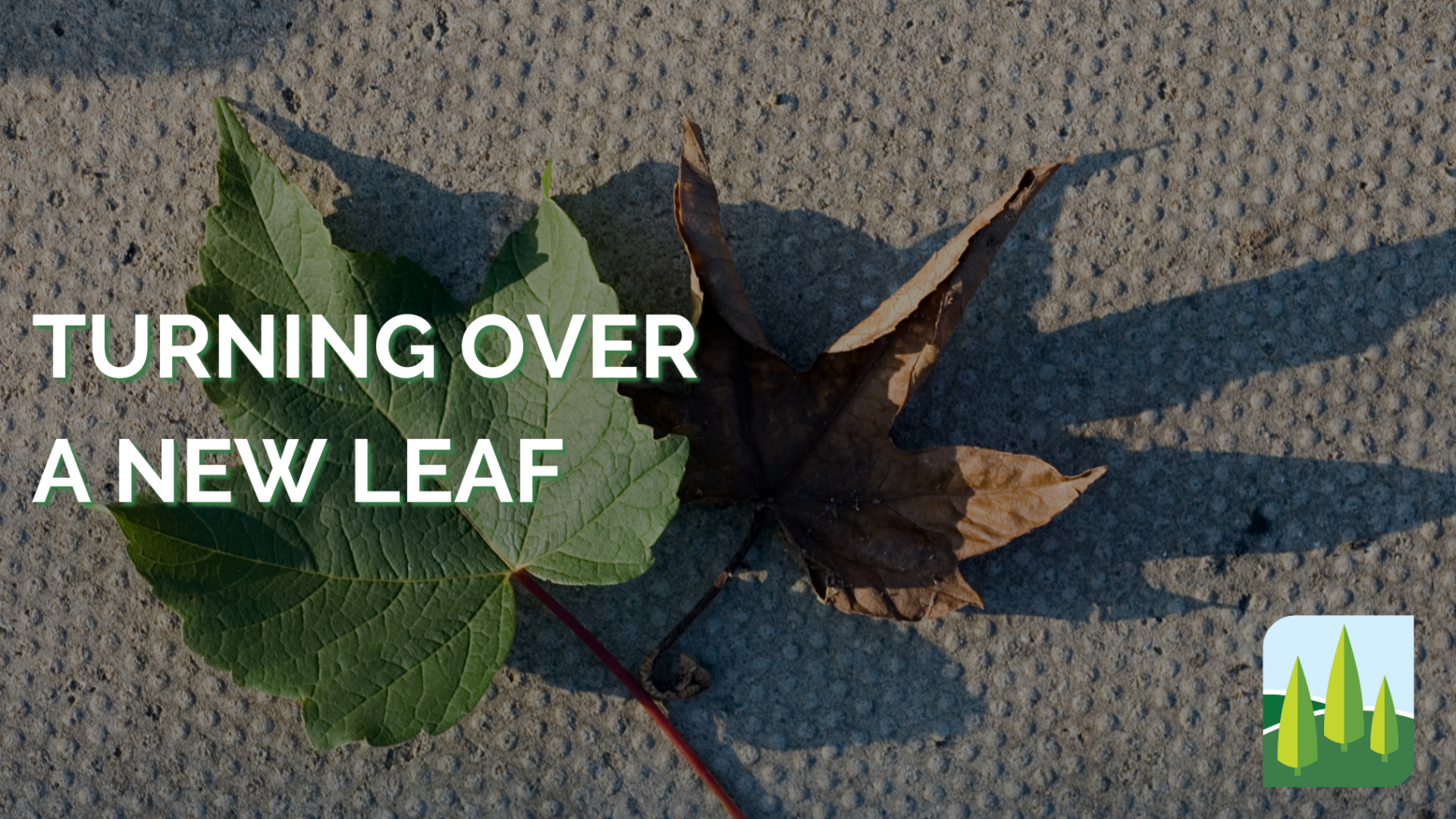
As the new year unfolds, it’s the perfect time to embrace fresh starts, set new intentions, and dive into new adventures—both in life and in the world of plants. Since ancient times, people have documented their knowledge of plants, not just for cultivation but for their medicinal and cultural significance. In the early days, it was physicians rather than gardeners who recorded this wisdom, using plants primarily for healing. Today, countless authors and experts continue to share their insights, making it easier than ever to expand our botanical horizons.
But in our fast-paced, digital world, it’s easy to forget the deep, immersive experience that comes with reading a good book. Whether it’s a detailed reference like Hillier’s Manual of Trees, one of Hessayon’s practical guides, or a captivating novel inspired by botanical exploration, there’s something uniquely fulfilling about flipping through pages, absorbing knowledge, and imagining the beauty of plants in different corners of the world.
January is a great time to pause, reflect, and let your mind wander through the pages of history and horticulture. Why not take inspiration from legendary plant explorers? John Tradescant, for example, ventured into the New World in search of exotic specimens, while the Dutch of the 17th century were swept up in “Tulip Mania,” obsessed with finding the most exquisite bloom.
Curl up by the fire, a loved one, or a furry friend, and let a book transport you to distant landscapes, secret gardens, and forgotten botanical adventures. Discover how even the Tudors struggled to perfect the art of garden design—especially when it came to installing water features!
There’s something to be learned from every gardener’s journey. Katherine Swift’s The Morville Hours tells the story of her challenges and triumphs in restoring a monastic garden, while Anna Pavord’s The Naming of Names dives deep into the fascinating history of plant classification. These books remind us of the dedication, patience, and curiosity that come with working with plants.
For those with a passion for travel, books about gardens around the world offer inspiration and discovery. Monty Don’s writings on Japanese and Spanish gardens provide insight into different cultural approaches to gardening. If you’re drawn to lost landscapes, you might enjoy reading about forgotten gardens that no longer exist. And if you love a good restoration story, Tim Smit’s The Lost Gardens of Heligan recounts the thrilling rediscovery of a long-abandoned garden—a reminder that even the most neglected spaces can bloom again with time and care.
As winter days slowly lengthen, take some time for yourself. A well-worn paperback or a glossy coffee-table book can be the perfect companion during these quieter months. Reading about plants and gardens can spark new ideas, fuel future projects, and provide a sense of connection to the natural world—even if you’re currently curled up indoors.
January is a season of renewal, not just for gardens but for ourselves. It’s a time to reset, to plan, and to step into the year with fresh energy. It’s not about rigid resolutions but about embracing a mindset of growth—turning over a new leaf in every sense.
And speaking of leaves, did you know that before paper as we know it was invented, people wrote on dried papaya leaves? The phrase “turning over a new leaf” not only symbolizes a fresh start but also refers to the act of turning a page—a reminder of the deep connection between nature and knowledge.
So, as you ease into the new year, why not let a book be your guide? Explore, learn, and be inspired—one page at a time.
Posted 20th Jan 11:12am
Read more >
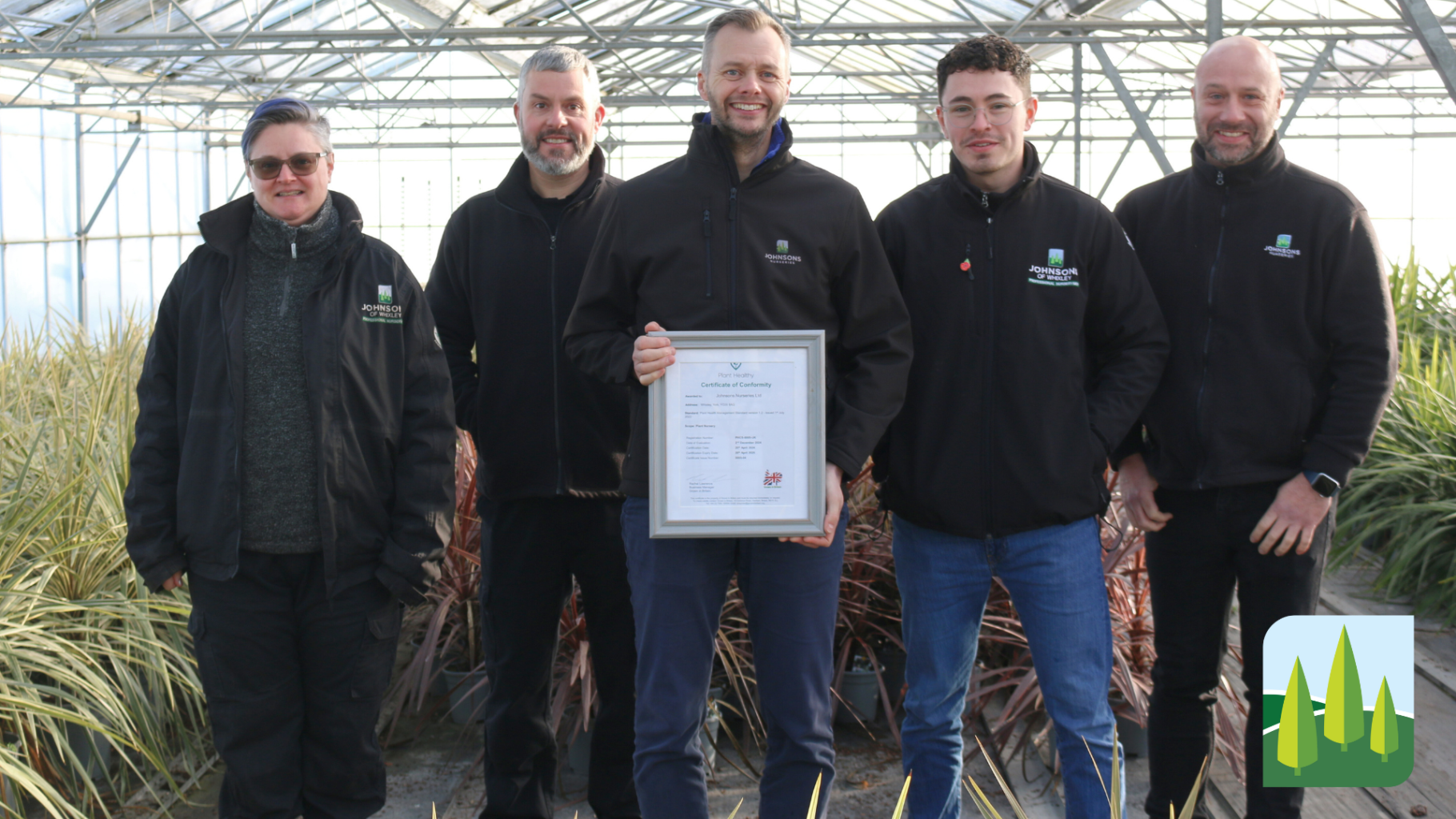
We are delighted to announce our fourth consecutive year of achieving the prestigious Plant Healthy Accreditation. This milestone highlights our unwavering commitment to maintaining plant health and promoting sustainability within the sector.
The Plant Healthy Accreditation is awarded to organizations that meet the stringent plant health management standards set by the UK Plant Health Assurance Scheme (UKPHAS). Once again, by securing this certification, we reaffirm our dedication to implementing best practices in biosecurity and plant care. We have recently completed comprehensive internal plant health training for our staff, ensuring that every team member is equipped with the knowledge and skills to uphold these high standards.
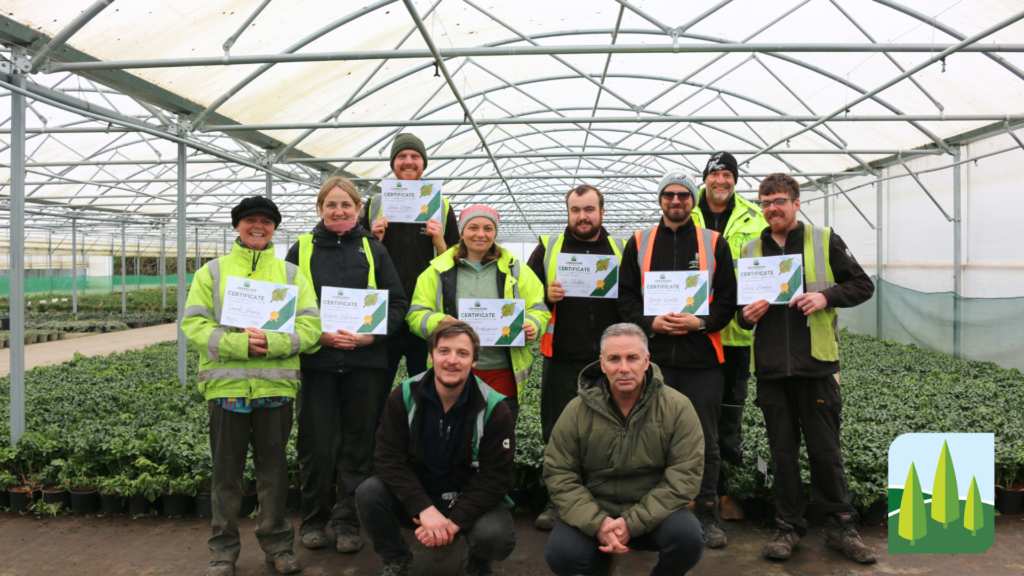
Plant health is not just a priority for us; it is a crucial concern for nurseries across the UK. Protecting woodlands from pests and diseases, such as ash dieback and oak processionary moth, is essential in safeguarding the nation’s native flora and fauna from non-native species.
Beyond conservation, healthy plants are fundamental to the creation of stunning gardens and landscapes. They are also vital to life itself, producing the oxygen we breathe and absorbing carbon dioxide. Moreover, plants play a crucial role in global food systems—without them, humanity simply would not survive.
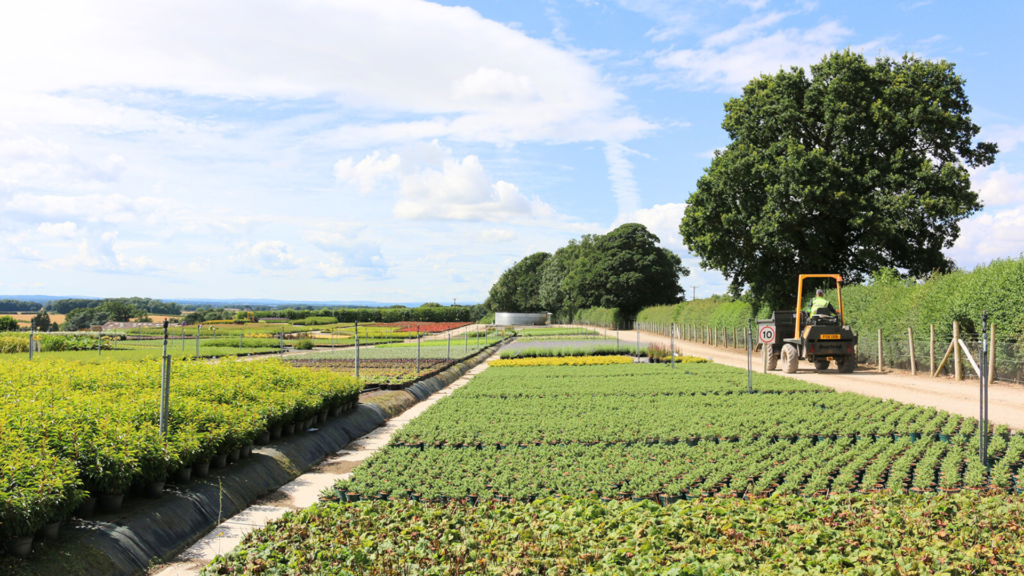
Achieving Plant Healthy Accreditation for the fourth year in a row is a testament to our proactive approach to mitigating biosecurity risks and consistently delivering top-quality plants.
Jonathan Whittemore, Commercial and Business Manager at Johnsons Nurseries Ltd expressed his pride in this achievement:
“Reaching our fourth year as a Plant Healthy accredited business is a proud moment for everyone at Johnsons Nurseries Ltd. It signifies our continuous efforts to prioritise plant health and strengthen the resilience of the UK’s horticultural ecosystem. We are committed to setting industry standards for quality and environmental responsibility.”
In addition to this accomplishment, we are also proud to hold BSI ISO 14001 certification for Environmental Management and ISO 9001 for Quality Management. These certifications further highlight our dedication to operational excellence, sustainability, and the delivery of superior-quality products and services to our customers.
We remain at the forefront of the horticultural industry, committed to fostering plant health, environmental sustainability, and industry-leading quality standards. As we continue to grow, we remain steadfast in our mission to protect and nurture the green spaces that are so vital to our planet’s future.
Posted 20th Jan 8:51am
Read more >

Creating a bird-friendly garden is one of the best ways to support local wildlife while adding beauty and biodiversity to your outdoor space. A diverse selection of trees, shrubs, herbaceous plants, hedging, and ground cover can provide essential food, shelter, and nesting opportunities for birds throughout the year. In this guide, we’ll explore the top plants that will turn your garden into a haven for feathered visitors.
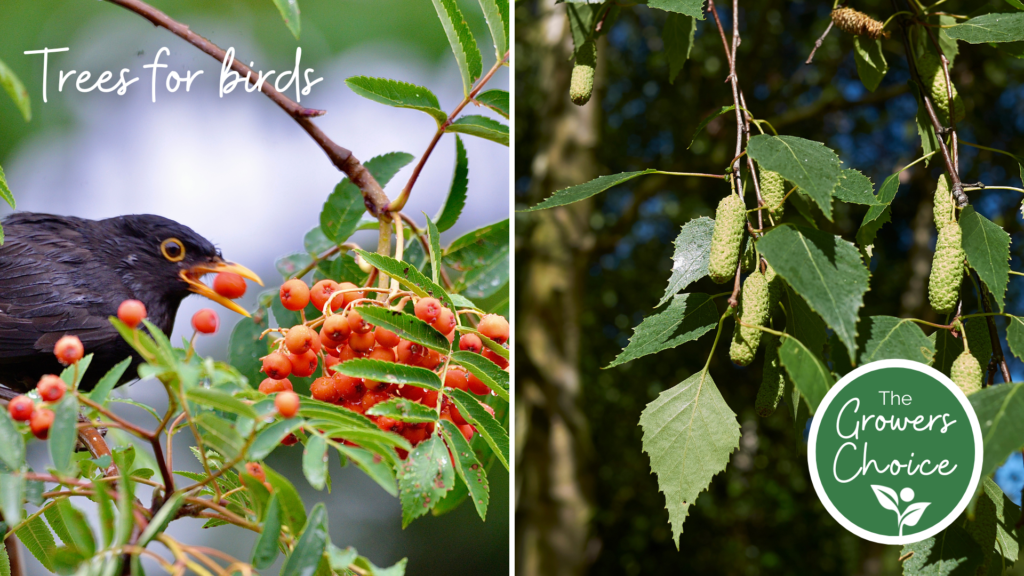
A small to medium-sized tree that produces fruits and blossoms loved by wildlife.
A stunning deciduous tree that supports insects, which in turn provide food for birds.
An iconic tree that provides food and shelter for many bird species.
A small ornamental tree with bright red berries that birds love.
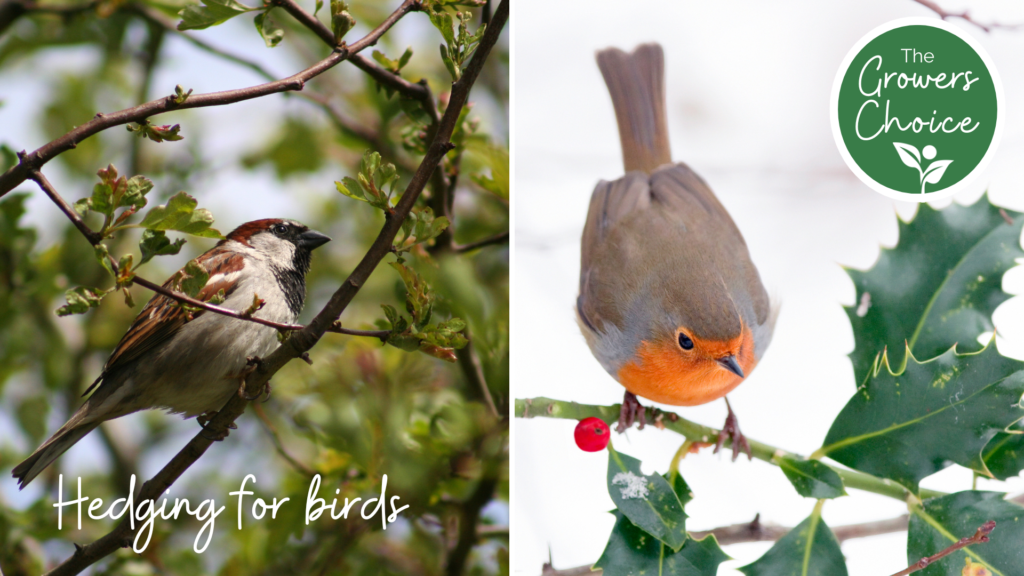
Holly is an excellent choice for bird-friendly hedging, offering both food and shelter.
A valuable hedging plant that produces abundant berries.
A dense, thorny hedging plant that offers excellent nesting sites.
A hardy shrub that provides edible hips and thick cover for birds.
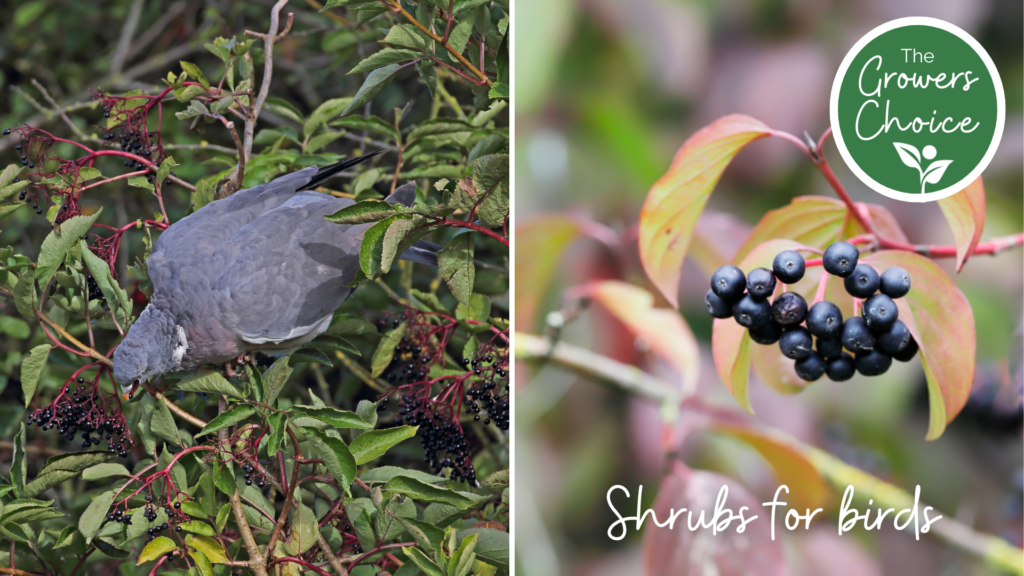
A fast-growing shrub that provides food and nesting sites.
It is a stunning shrub with year-round interest.
A colourful shrub that provides both food and shelter.
A shade-tolerant shrub with bright yellow flowers and deep blue berries.
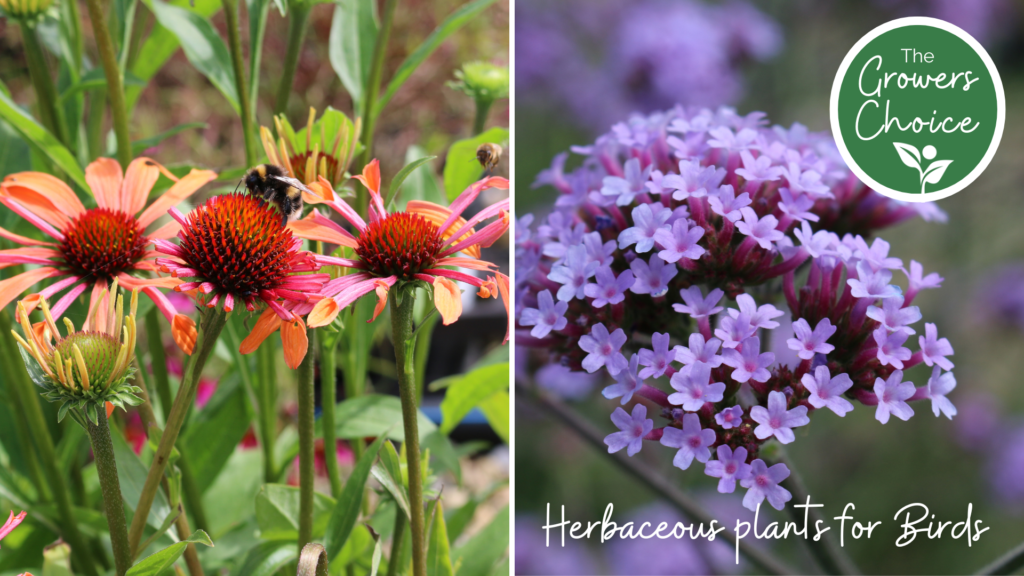
A vibrant perennial that attracts both insects and birds.
A tall, airy perennial that adds height and wildlife value.
A bright flowering plant that attracts birds with its seed heads.
A classic plant that provides an abundance of seeds for birds.
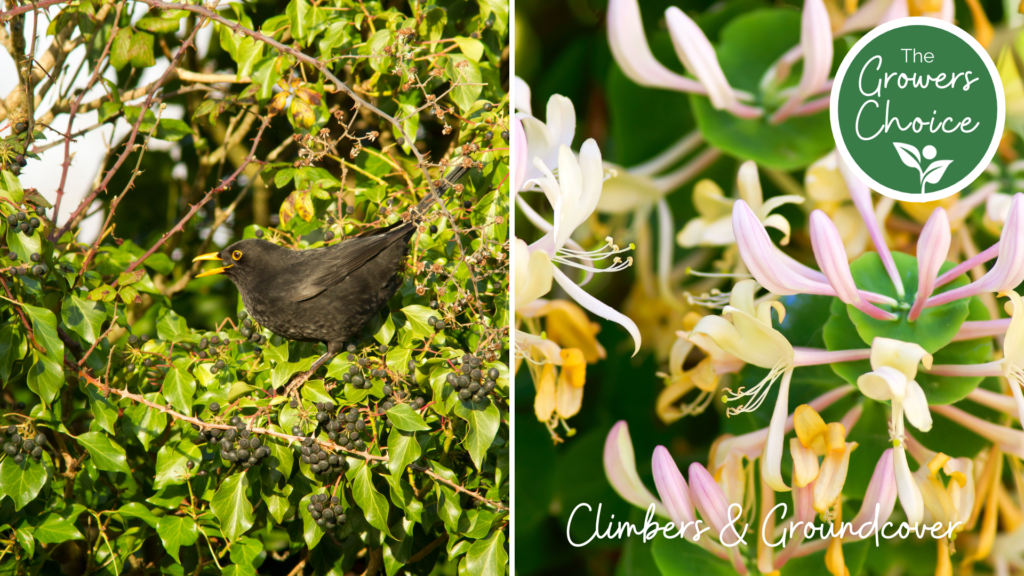
An evergreen climber that offers excellent shelter.
A scrambling plant with edible fruits that birds enjoy.
A climbing plant that produces fragrant flowers and berries.
By incorporating a mix of trees, hedging, shrubs, herbaceous plants, climbers, and ground cover into your garden, you can create a thriving habitat for birds all year round. These plants not only provide essential food and shelter but also enhance the beauty and ecological balance of your landscape. Whether you have a small urban garden or a large rural plot, these selections will help support local bird populations while adding vibrant greenery to your space.
Posted 16th Jan 11:50am
Read more >

At Johnsons Nurseries Ltd, we are proud to announce the successful completion of our Autumn/Winter Plant Identification Training Program. This in-house initiative is part of our commitment to professional development, equipping our team with the expertise needed to provide exceptional service and care for our plants and customers.

The Autumn/Winter program builds on a year-round approach to education, complementing earlier Spring and Summer Plant Identification Training sessions. Together, these seasonal programs provide our employees with an in-depth understanding of plant groups across all seasons, ensuring a well-rounded skill set.
In addition to plant identification, employees have participated in Plant Health Training and the Askham Bryan Bespoke Horticulture Course, further enhancing their knowledge in plant care, identification, and health management.

We are delighted to celebrate the hard work and dedication shown by our team throughout the program:

To honour their achievements, participants were awarded certificates in a special ceremony led by Group Managing Director Graham Richardson and Production Director Robert Richardson. This recognition reflects the importance we place on the growth and success of our team.
As we celebrate the completion of this program, we’re also looking ahead. Plans for 2025 include:

“Johnsons remains committed to investing in our employees’ growth and development,” said Group Managing Director Graham Richardson. “A knowledgeable workforce is essential to delivering the best possible service, and we’re excited to continue building on this success.”
At Johnsons Nurseries, we believe that investing in our team is an investment in our future. By fostering expertise and a passion for learning, we ensure that our employees are equipped to meet the challenges of the industry while providing the best possible support to our customers.
Stay tuned as we continue to grow—one training session at a time!
Posted 8th Jan 3:08pm
Read more >
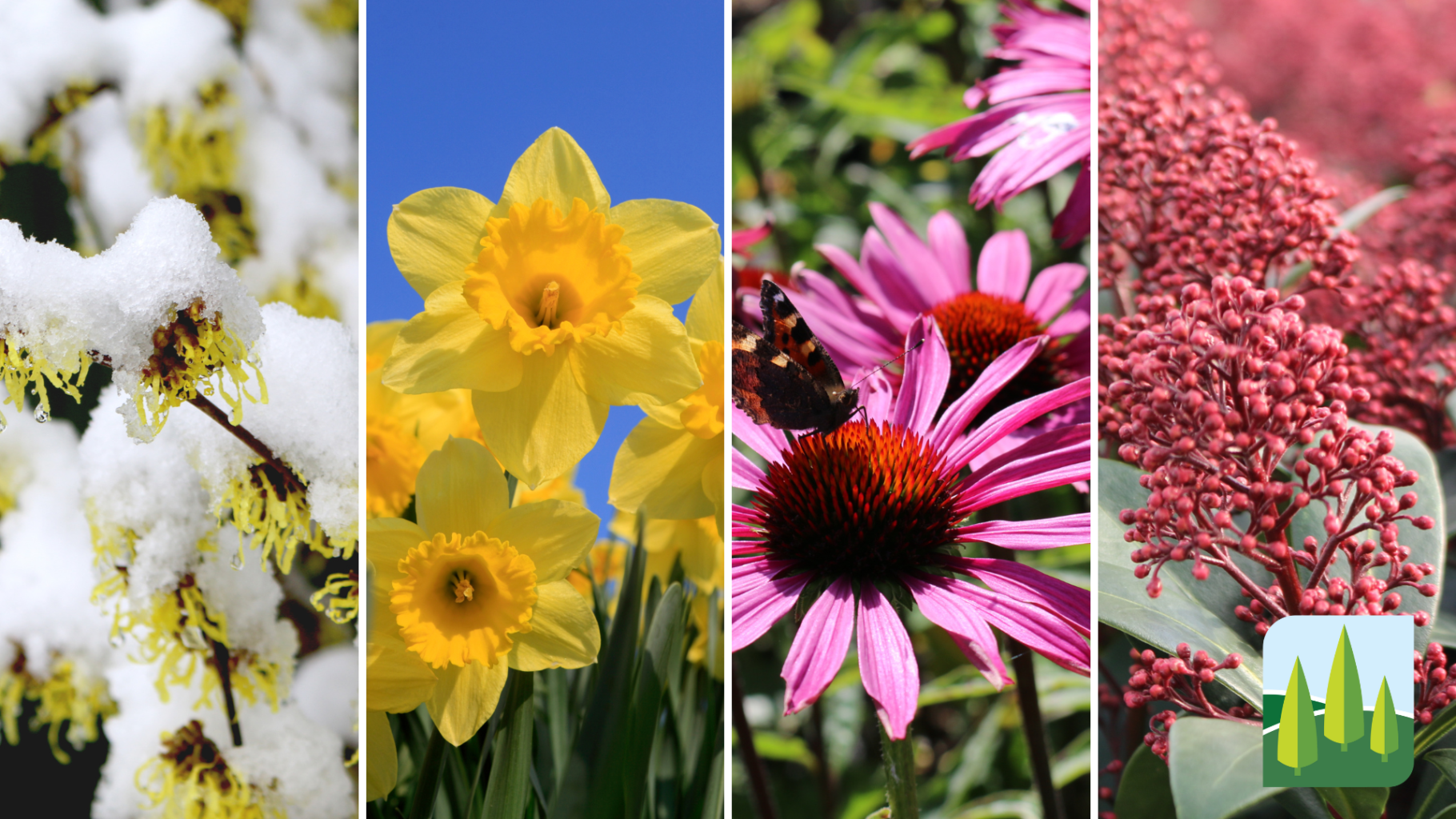
As 2025 begins, it’s the perfect time to start planning and preparing your garden projects for the months ahead. Whether you’re tackling a new project or maintaining an existing space, now is the ideal moment to assess your site, understand its unique characteristics, and make a plan that ensures success. From evaluating soil conditions to considering the impact of wind, sun, and water, a little preparation now can lead to a thriving and beautiful garden in the seasons to come.
Which factors should you consider? Are there windy corners or sunny spots that might impact the area? Are there parts of the site prone to waterlogging? Additionally, you can perform a soil test to determine the pH. A simple kit, available at hardware stores or garden centres, can help you identify whether your soil is acidic or alkaline.
If you have heavy clay soil, you will have to be prepared for a bit of water logging. Even if the soil has been broken up over the years, there will still be a pan of clay that forms at the depth just below where you would usually dig. Clay soil can be broken up by adding more organic matter and breaking it down with grit to make it more free-draining and less likely to leak nutrients.
If your site is located near moorland or a conifer woodland, the soil is likely to be more acidic. You can either choose plants that thrive in acidic conditions or work to improve the soil. To reduce acidity, you can amend the soil with lime-rich materials, such as tree start. Alternatively, you can adapt your planting scheme to include acid-loving plants like Rhododendron, Azalea, and similar species.

Understanding what grows best in different parts of your garden can be a journey of discovery. While plants don’t always behave as described in gardening guides, knowing the basics of sun and shade preferences can help you make the most of your garden space.
Certain plants thrive in shade, such as hostas and ferns. While they can tolerate some sunlight, too much can affect their vigour or even change their colour. On the other hand, some plants entirely dislike direct sunlight. Their delicate foliage can scorch, and they may fail to produce the expected flowers.

When planning your garden, observe how sunlight moves through your space during the day and across the seasons. The amount of sunlight in summer and winter can differ significantly, and this understanding can guide your plant placement. Keep in mind that shade doesn’t mean total darkness—most plants need some level of dappled sunlight to photosynthesize and thrive.
For shaded areas, consider shrubs like Aucuba japonica, which has glossy leaves, or Mahonia, which is an early-flowering option. Evergreen shrubs such as Skimmia, Osmanthus heterophyllus, and Viburnum davidii are excellent choices. In moist, shaded spots, delicate bloomers like Lily of the Valley (Convallaria majalis), Corydalis Blue Heron, or the autumn-berry-producing Actaea rubra can add interest. For drier shaded areas, Geranium phaem album, Epimediums, Lamiums, and Vinca provide reliable options for ground cover.

If your garden is a sun trap, such as a walled garden, the options are abundant. Many climbing plants thrive in full sun, including Jasmine, Honeysuckle, Garrya, and Passiflora. Flowering shrubs like Ceanothus, Fuchsia, and Buddleja are perfect for sunny spots.
Think Mediterranean when choosing plants for sun-drenched areas. Species with small, ovoid leaves, such as Pyracantha, Berberis, and Roses, love the warmth and light. Herbaceous plants like Artemisia, Phlomis, Papaver, and Eryngium can provide texture and vibrant blooms.

Did you know that plants with purple foliage, such as Heuchera Obsidian, require more sunlight than their green-leafed counterparts, like Lime Ricky? In shaded conditions, purple-leaved plants may lose their vibrancy due to lower chlorophyll levels.
By understanding the needs of your plants and observing your garden’s light patterns, you can create a space where every plant thrives, whether in sun or shade. With the right choices, your garden can be a harmonious and flourishing haven year-round.
Need inspiration for your 2025 projects? check out our grower’s choice posts here
Posted 7th Jan 11:52am
Read more >